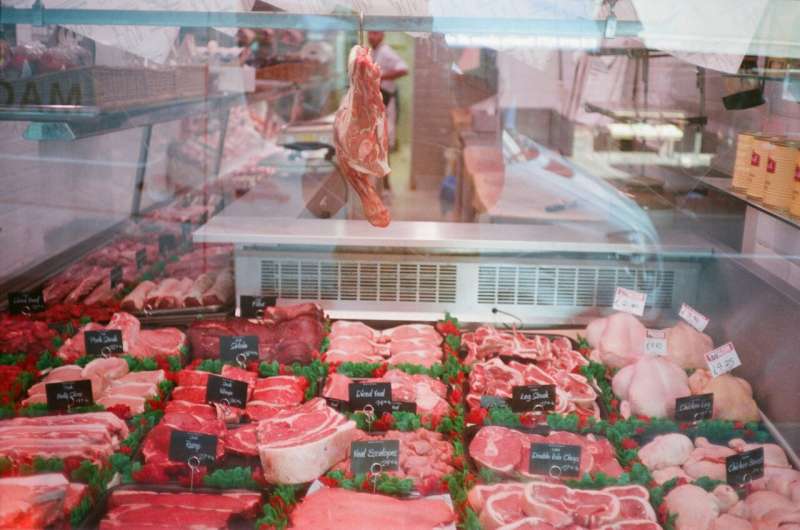
A multi-billion pound criminal enterprise lurks amid our supermarket shelves. Food crime not only harms our wallets but threatens public health. It includes activities such as mislabelling a product, replacing a food or ingredient with another substance that is inferior, and even poisoning.
This is a global concern because of how food crime is evolving. The complexity of food supply chains, the globalization of food markets, and a lack of transparency heightens the vulnerability of the food sector. So, rethinking how we combat food crime by using technology is imperative.
Food crimes now inflict an estimated US$40 billion (£31 billion) in damages globally each year. The UK's Food Standards Agency defines food crime as "serious fraud and related criminality in food supply chains."
If we think about food crime from a profit-driven criminal perspective, we can understand its dual role both as a way for criminals to generate dirty money that needs to be laundered, and as a means of laundering illicit funds from other criminal activities.
The food industry is particularly attractive to fraudsters because of its potential to be very profitable. Researchers have uncovered two main approaches adopted by fraudsters in relation to high-demand products.
First, they target relatively low-cost everyday foods, such as bottled water or olive oil, because these involve a large proportion of consumers, which means they can maximize profits. For example, a Spanish and Italian investigation in 2023 led to 260,000 liters of olive oil being seized. Investigators found that olive oil labeled as "virgin" or "extra virgin" had been diluted with a low-quality variant.
Another example was the 2013 horse meat scandal, when beef products across Europe were found to contain horse meat. Such meat was more than four times cheaper to produce.
Alternatively, some fraudsters trick non-discerning "foodies" into paying premium prices for cheaper food dressed up as a superior product—for example, cheap truffles masquerading as exotic Italian truffles.
Unfortunately, our understanding of these complex financial crimes is often limited, making the detection and prevention of food fraud a challenging task.
Emerging technology
The Association of Certified Fraud Examiners, an international anti-fraud body, found that 91% of organizations globally have used data analysis technology in response to growing financial crime risks. This technology holds promise because it can unearth hidden patterns in vast datasets, leading to better detection and prevention of crimes.
Machine learning, for example, can analyze data and identify suspicious activity. It can also learn and adapt as new information becomes available. In the context of food crime, this could involve flagging particular locations, individuals or businesses that might pose a risk.
Evidence is limited on this topic, so we think further research needs to be conducted to analyze past food fraud cases. Identifying recurring themes and patterns using machine learning could develop a better detection model which, when combined with the expertise of regulators, food producers, distributors and retailers, could be a powerful tool.
The food industry is undergoing a potential shift, with researchers suggesting that blockchain technology could empower consumers to make better decisions when they buy food. Blockchain is like a secure public ledger that can't be tampered with. So this technology offers the possibility of giving everyone from supermarket chains to individual consumers the ability to trace their food's journey back to its origin, with ease and confidence. Imagine being able to make informed choices at the shop, knowing exactly where your food comes from.
In Australia, the implementation of blockchain technology by some producers in recent years is expected to help address the multi-billion dollar problem of food and wine fraud. A recent study found blockchain's data security and resistance to data corruption were important features that underlie its potential to combat food fraud.
Collaboration is key
While new technology offers promise in fighting food crime, there are hurdles to overcome. Implementing blockchain across the global food supply chain, for instance, faces challenges including a lack of international standards and difficulty handling massive amounts of data. Blockchain technology may also require additional technology, making it expensive for small food producers.
Ultimately, the key to tackling food fraud lies in collaboration. We need to bring together law enforcement, industry professionals, organizations of all sizes and academics, each with proper ethical oversight from their institutions.
Any anti-fraud measures shouldn't make it substantially harder for consumers to buy food. If the process becomes too cumbersome, people might find ways to circumvent it, which may create new vulnerabilities in the food system.
This article is republished from The Conversation under a Creative Commons license. Read the original article.![]()
Citation: Food fraud is a growing economic and health issue, but AI and blockchain technology can help combat it (2024, April 3) retrieved 3 April 2024 from https://techxplore.com/news/2024-04-food-fraud-economic-health-issue.html
This document is subject to copyright. Apart from any fair dealing for the purpose of private study or research, no part may be reproduced without the written permission. The content is provided for information purposes only.
